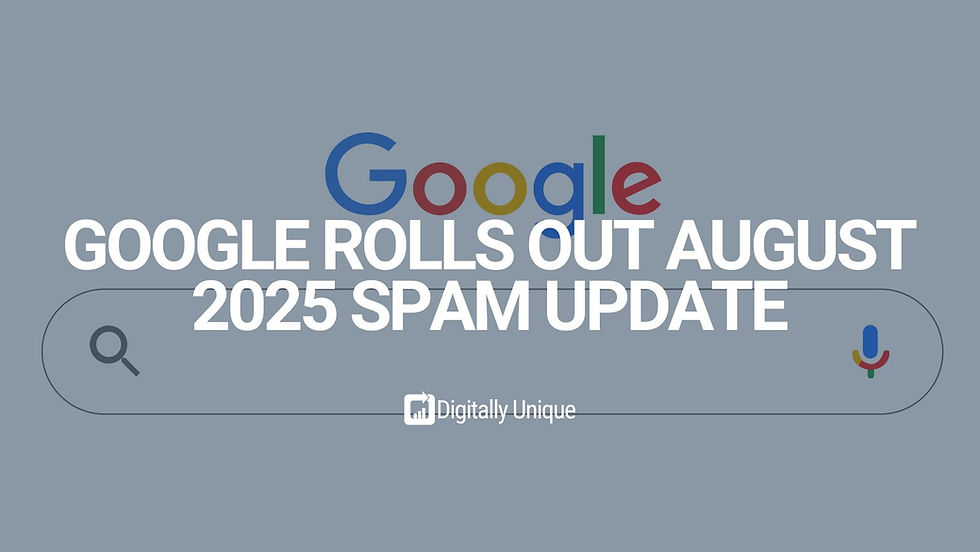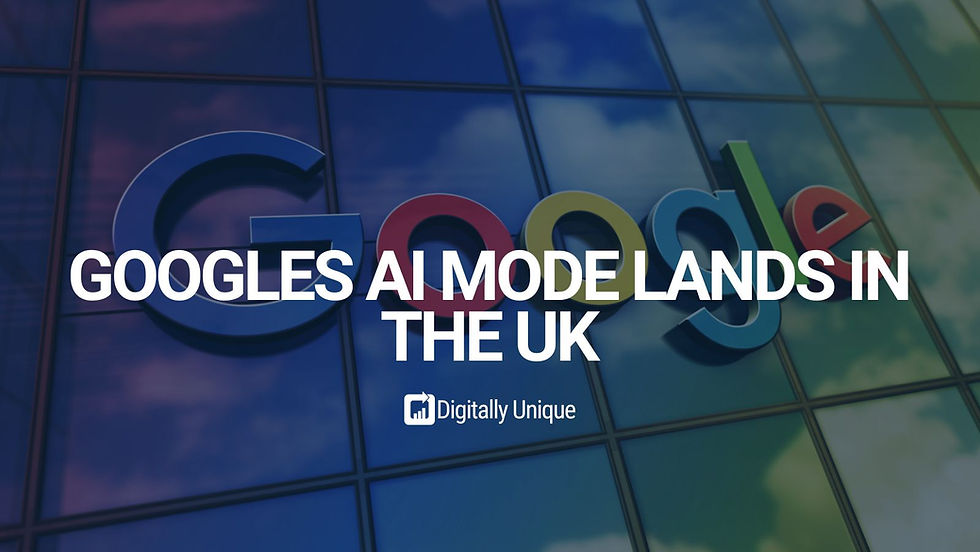Major Shift in Search: Google AI Summaries Mirror Organic Results 54% of the Time
- Jessica Gibbins

- 39 minutes ago
- 2 min read

Highlights
A new 16-month analysis finds AI Overviews cite pages that also rank organically 54% of the time
Overlap varies by sector, with information-heavy verticals typically higher than retail
Zero-click behaviour is likely to increase as summaries satisfy intent faster
Smart on-page structure, schema and concise definitions help earn citations
Treat “overlap” as a KPI alongside rankings and CTR
In a notable shift for search, a longitudinal study reports that Google’s AI Overviews now pull 54% of their cited links from pages that also rank in the organic results. The finding comes from BrightEdge’s 16-month tracking of AI Overview citations across multiple industries, showing steady convergence since launch.
What does “overlap” mean in practice? It refers to the proportion of AI Overview sources that are also present on the same query’s organic results. The trend implies that the systems behind AI Overviews are leaning more on signals that already reward authority and page quality, rather than surfacing an entirely separate set of sources.
If you are revisiting on-page structure to improve eligibility for these summaries, robust article writing that surfaces clear definitions, step-by-steps and well-labelled sections remains foundational.
Why the 54% matters
Authority reinforcementIf strong organic pages are increasingly the ones cited, classic SEO best practice continues to pay off in an AI-first interface.
Click dynamics are changingSummaries can satisfy intent at the top of the page, which may depress downstream clicks. Industry reporting has charted publisher concerns about traffic dilution, with Bloomberg noting widespread anxiety among site owners as AI experiences expand in search, even as Google argues discovery is broadening mid-term (Bloomberg reporting
What we are seeing across the industry
The conversation is no longer confined to SEO circles. Business press coverage highlights a scramble to rethink distribution models as AI-native search grows. The Financial Times has described how media groups are adapting to a “Google Zero” threat by diversifying traffic sources and reshaping content economics, with AI features altering how readers discover and consume information.
What to do next
Benchmark your overlapFor your top queries, record whether your pages appear in both AI Overviews and organic listings. Track this monthly alongside impressions, CTR and average position.
Design for answersLead with a 2–3 sentence summary that cleanly answers the query, then expand into depth. Use short paragraphs, supporting tables and scannable lists.
Strengthen structure and signalsAdd schema suited to your content type, include concise definitions, and use descriptive H2s and H3s so key takeaways are easy to extract.
Map by intentSeparate informational from commercial queries. For product-led searches, enrich with reviews, specs and comparison blocks. For advice content, emphasise expertise and clear step-by-steps.
Measure what mattersWatch changes to click-through when an AI Overview is present, not just rank. Prioritise topics where you can win both the summary citation and the blue link.
The bottom line
A 54% overlap signals a maturing synthesis between AI Overviews and classic rankings. Success now hinges on content that earns trust twice: once with the ranking systems and again with the summariser that sits above them. If you optimise for clarity, authority and extractable answers, you improve your chances of being visible in both places.





